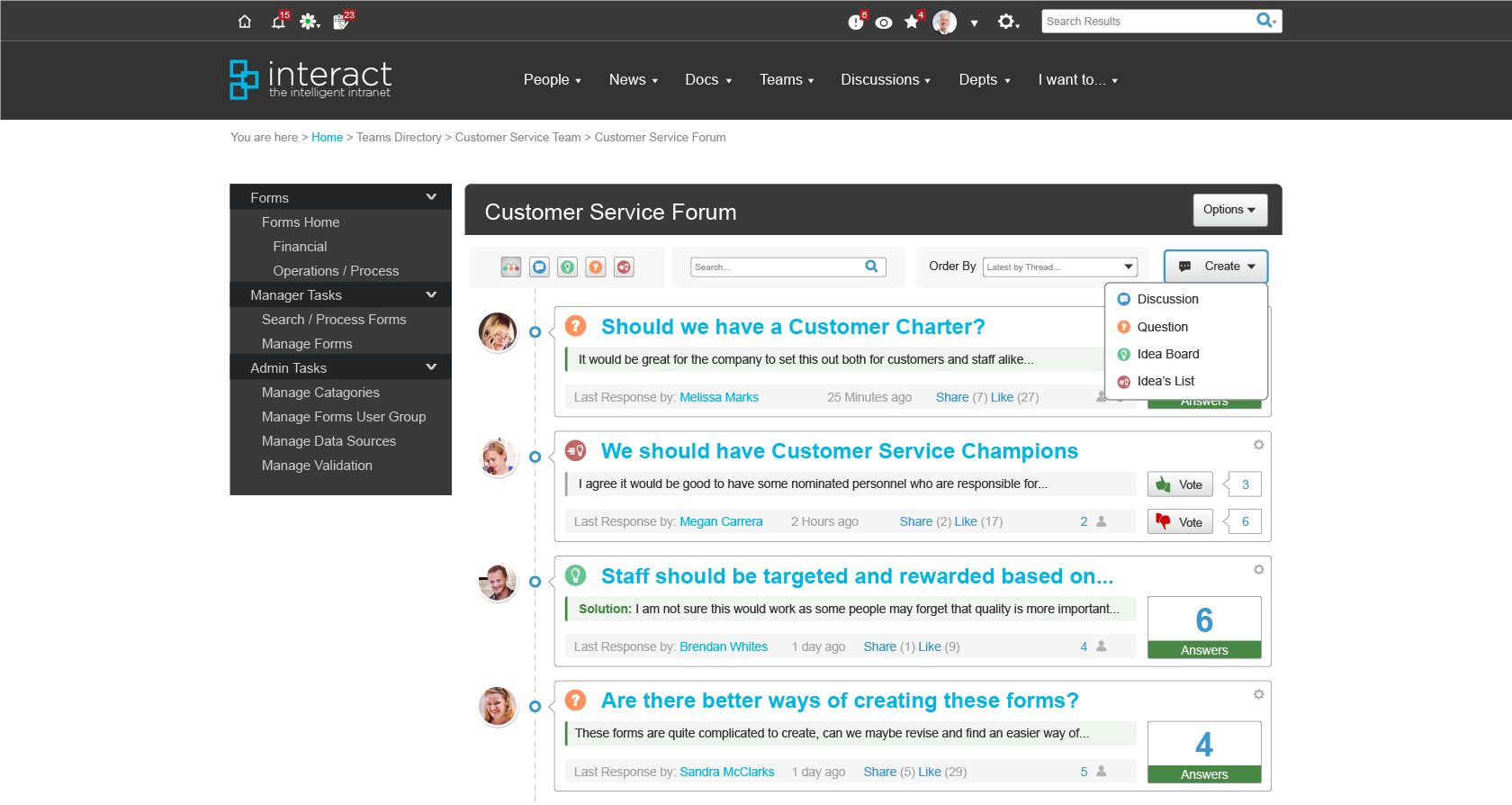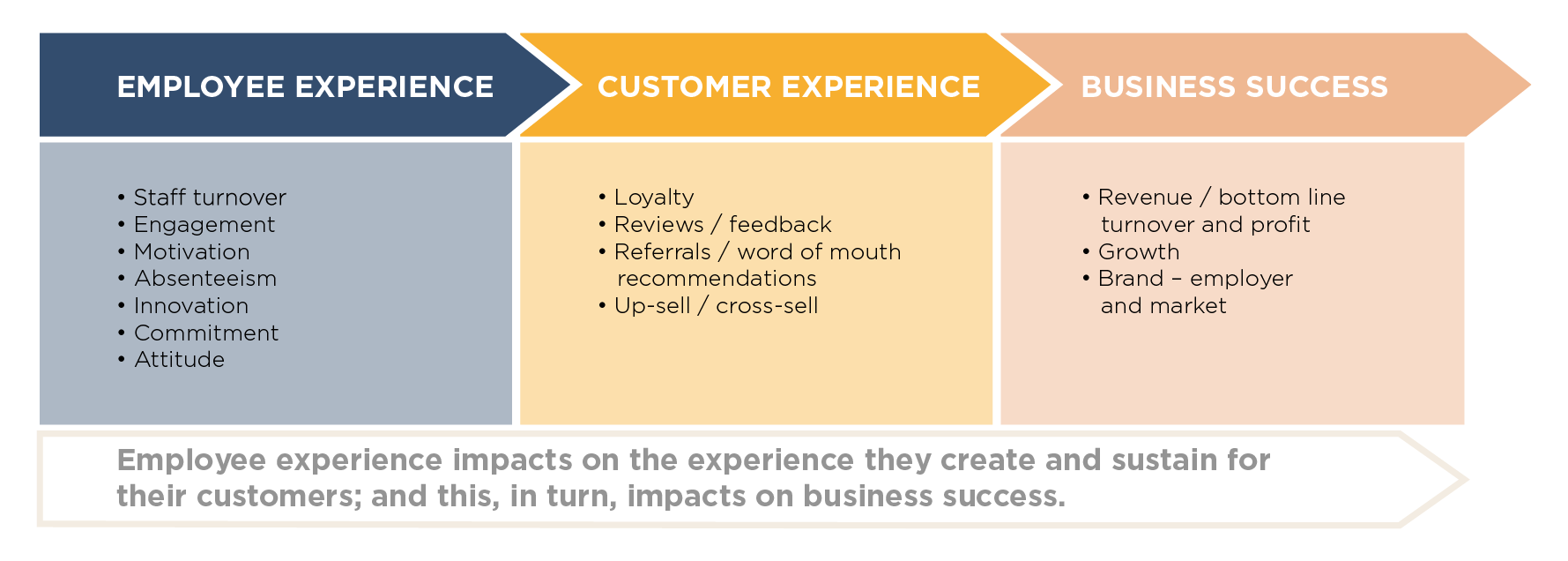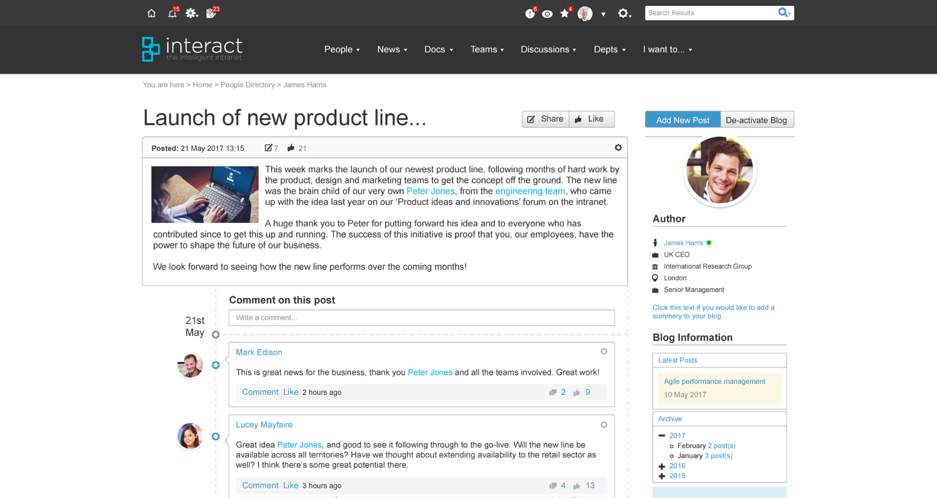IC ROI: 8 (surprising) ways internal communication technology impacts your bottom line
As a communicator, I’m used to having my profession regarded as one of the ‘softer’ areas of business.
In Sales, you’re measured on the volume and value of opportunities you bring in – and that affects turnover and profit. In Customer Service, it may be the number of tickets you resolve, or the feedback rating you receive – and that impacts on customer retention. Almost everywhere in business, there is a numerical, tangible way to prove your worth.
But what about communications – and particularly internal communications?
Intranet ROI calculator
There’s a broad acknowledgement that internal communication, when done correctly, delivers a positive impact on ‘employee engagement’. This, in turn, can impact on business results.
However, at a tactical level, drawing that line between your internal newsletter and strategic business objectives, such as retention or growth, is very tricky. You may be able to show how many clicks your latest internal email got – but when your CEO responds with the question, “so what?”, you’ve got a challenge on your hands.
The good news is, IC is a maturing industry. The increased attention and research means we’re now finding more ways to measure and benchmark success. With the explosion of new tools and technologies circulating in the IC marketplace – which also represents one of the greatest areas of investment for the industry – we want to explore that missing ‘link’ between comms technology, and the results we know it can deliver. Here’s the run down on intranet ROI.
#1: It cuts time to find information
Time, as they say, is money. But where does the overwhelming majority of yours go?
McKinsey explored this question in the McKinsey Global Institute report some years ago, and the findings still ring true in today’s knowledge management economy.
With knowledge typically now dispersed across emails, document storage systems, instant message conversations, project management tools, role-specific applications and more, we spend an estimated 19% of our work week searching and gathering information.

Internal communication technology makes this process more streamlined, centralized, and efficient. Employees can perform a single enterprise search and tap into not only stored documents or information, but also the knowledge, expertise and experience of their peers.
Best of all, through use of social collaboration tools such as forums or discussions, that knowledge is retained even after individuals leave the business – a challenge for organizations who lose vital experience as part of employee turnover.
Intranet ROI calculator
So, what’s that saving worth in business terms?

#2 It reduces (costly) errors
Mistakes are expensive.
Whether your staff are purchasing from an unapproved supplier and missing out on preferential rates, or they’re failing to comply with legislation that could leave you vulnerable to crippling lawsuits, they need avoiding at all costs.
The key to reducing errors? Communication.
Ensuring your staff are equipped with the knowledge and support they need to perform their roles correctly, alongside access to the essential documents and policies, is vital. Internal communications technology can directly impact your bottom line by:
- Pushing essential content to employees, for example using mobile push notifications, email alerts, or simply utilizing targeting and behavioral algorithms to get the right content to the right people.
- Ensuring content is read and acknowledged, by using a ‘Mandatory Read’ feature for example. This helps keep your business compliant and can be used for reporting purposes.
- Delivering a single, current version of truth. How many errors occur due to multiple, outdated or incorrect versions of documents spread across different PCs, drive or email inboxes? Internal communications technology based on a powerful CMS with version control and review alerts reduces your risk.
- Giving staff an area to ask questions, preventing incidences from occurring due to lack of understanding.
- Connecting employees to internal influencers and experts, with a centralized People Directory that allows staff to search by skill, expertise or interest – finding individuals beyond their immediate network who are best equipped to help.

(Forums and discussion boards on an intranet provide a real-time, interactive way to connect employees and ask questions, put forward ideas or simply search previous discussions to find examples of best practice.)
A searchable, centralized reference point also gives employees a go-to place to seek out help or advice from their peers. If your staff are uncertain about a particular process or best practice, but don’t have experts to hand, they can tap into the expertise of dispersed colleagues quickly and easily – preventing costly errors from happening.
#3: It equips dispersed teams – without the shipping costs
Globalization, remote working, telecommuting and the rise of technology have all contributed to the rise of geographically dispersed workforces. Balancing the control of a consistent, centralized brand with the reality of multiple offices, shops or work locations is often a costly logistical challenge.
Interact customer Waterstones are a strong example of how internal communication technology can deliver a surprising return in this area.
With over 300 stores and 3 head offices dispersed across the UK, Waterstones faced difficulties ensuring a consistent brand message. When producing headers for book displays, these would be traditionally printed by a third-party company and distributed form a central location. The lead time and cost presented an ongoing burden for the business.
Intranet ROI calculator
By rolling out a centralized, cloud-based intranet and using this to host a trusted collateral area, Waterstones have now empowered regional staff to print their own headers in-house, eliminating the need for third-party distributors.
With the support of internal communication technology, Waterstones has reduced its carbon footprint and cardboard wastage, dramatically improved response and lead times, empowered staff with greater choice and ultimately saved the business hundreds of pounds annually.
#4: It makes business paperless and more efficient
Operational efficiency isn’t just good business sense; it’s also now an expectation of consumers. As organizations, we are most competitive when we make the most of our time and resources, minimize waste, and consider our corporate footprint.
Internal communication technology isn’t just about pushing messages out. It’s about supporting employees to do their jobs efficiently and effectively. Using digital workflows and forms on an intranet to perform essential administrative tasks such as booking a leave of absence or submitting expenses can have a significant impact on time and resource.

#5: It helps your business attract – and retain – the best talent
This is one of the areas we hear internal communications claiming ROI that can be most challenging to prove. However, as the value of employer brand and job-hopping amongst younger generations continues to rise, it’s also high on the senior management agenda.
Internal communication technology can play a surprisingly important role in several ways.
- It supports the building and communication of a strong internal brand and culture
- It gives employees a voice, ensuring their ideas are heard and valued – and their feedback, concerns or frustrations are listened to and actioned
- It can be used to facilitate an employee advocacy program
- It can be a workplace benefit in its own right: employees increasing expect and value technology as a perk when seeking out, and choosing to stay in, any given organization
41% of millennials say they prefer to communicate electronically at work than face to face or even over the telephone. Giving employees the digital communication tools they need is essential to attract and retain emerging talent. (Source: ‘Workforce of the Future’, pwc.)
- It is a powerful and visible way to recognize employees and discretionary effort, increasing morale and engagement
- It provides visibility of internal opportunities and success, keeping your employees motivated and instilling pride in their organization’s achievements
Using telemetry figures and analyzing both usage and retention figures of our own customers, we found a direct correlation: if 50% of employees acted socially or collaborated on their intranet at least once a month, retention increased by 12%. One of the most compelling business cases for the power of social technology came from Sport England – who, after launching their new intranet in 2016, saw activity levels of 93% and a 19% increase in retention rates.
#6: It shapes a positive employee experience
Employee experience is something we’ve touched on before, and it’s getting more traction – with good reason.
Every touchpoint an employee has as part of their job – whether with their peers, work environment, manager, customers or the technology they use – shapes their overall experience of work. They are the new customer. To keep this new breed of ‘customer’ happy and ensure that all-important engagement, we need to think about how we positively impact those touchpoints.
Intranet ROI calculator
Internal communication technology has a key role to play, and can help shape the employee experience in a few ways:
- It helps meet employee expectations of workplace technology, offering intuitive, easy to use social technology that will match their experiences at home
- It provides visibility of the wider business, with social tools such as microblogging, blogs, events, news and galleries keeping staff informed and engaged
- It helps shape and communicate the company culture, keeping the company mission and values front-of-mind while connecting employees to the wider purpose of their organization
- It acts as a facilitator of the digital workplace, with functionality such as integration or single sign-on bringing together the vast range of applications used by employees for a more streamlined work experience
- It helps employees build connections and communities in the workplace, cementing working relationships that instill positive perceptions of work – a particularly valuable benefit for remote workers, who may suffer isolation or exclusion as part of their role
Employees with a best friend at work are 7x more likely to engage fully in their work. Connections matter. (Source: HBR)
#7: It improves the customer experience – and resulting revenue
Your marketing team know the benefits and USPs that resonate with would-be customers. Your sales team understand the main pain-points or challenges customers face, and how to overcome those objections. Your customer service team have first-hand experience of the biggest problems or complaints customers bring forward, and the main reasons they leave.
However, this information is often silo-ed into those teams. If those insights aren’t connected together, that’s reflected in the customer experience – disjointed, fragmented, with a sense of being passed from pillar to post.
Internal communications technology brings together those perspectives and customer touchpoints for a 360-degree view. A centralized depository of customer feedback, queries, learnings, surveys, marketing collateral and discussions gets your employees working as a collective to deliver the best possible experience for the customer. It can be used to:
- Standardize best practice and deliver a consistent experience
- Access answers and ideas for the customer quickly and efficiently
- Connect different departments, breaking down silos that can prove frustrating for the customer
- Create central depositories for vital information, insights and knowledge
- Innovate and problem solve across different role disciplines
Ultimately, the goal of internal communication technology is to improve the employee experience. Research shows that customer satisfaction and loyalty are nearly twice as strong when employees are satisfied with their jobs. The domino effect is tangible: internal comms creates happier and informed employees, who create happier and more satisfied customers, who put more revenue into the business.

#8: It makes you more innovative and competitive
Innovation took a back seat during the financial crisis; it’s now back on the boardroom agenda as a staple for remaining competitive. 64% of global CEOs regard innovation as at least equally important to operational effectiveness, according to research conducted by pwc.
But how can we, as organizations, stay ahead of the game and continually innovate?
The answer lies in a collaborative approach to idea generation: openly up the drawing board to every employee in your business. Sometimes, the best ideas come from those on the front line, rather than those in the boardroom.
Internal communication technology holds the key. It facilitates two-way conversations and provides a safe, centralized environment for employees to put forward ideas, brainstorm and collaborate with their peers. It helps embed a culture of innovation when senior management recognize, celebrate and encourage the input of employees.

(Using suggestion forums where employees are empowered to put forward ideas – often in a more neutral and less intimidating environment than a face-to-face meeting – can help organizations tap into the insights of their grass-roots employees. Could your next product idea be residing in your workforce?)
Internal communications tools ensure you tap into the potential residing within your business. With more ideas comes greater innovation, growth, opportunity, market share – and, ultimately, profit.
So, is internal communications technology worth the investment?
In a word – yes.
The value of internal comms and the tools that come with it is something those in the industry understand, suspect, and believe – however, getting the buy-in of those controlling the purse strings can be a bigger challenge.
The answer lies in building a strong business case. Identify areas within your organization where internal communications technology could deliver value and measure your current performance to provide a benchmark. Where would you like to get to? What’s the value of that difference?
For example, staff turnover in your organization may currently stand at 20% a year, and your organization would like to reduce this to 15%. You find this is worth $150,000 to your business in recruitment and lost productivity costs. Positioning this as a tangible return on investment can help secure budget and buy-in; then, revisiting this as a performance indicator can show the value to senior management.
Internal communications continues to mature as an industry and the same scientific, numerical mindset will increasingly be applied to prove worth. The trick is to look beyond the same-old, ‘accepted’ returns of internal comms – and dig a little deeper. You may be surprised at just how many ways your technology pays.

